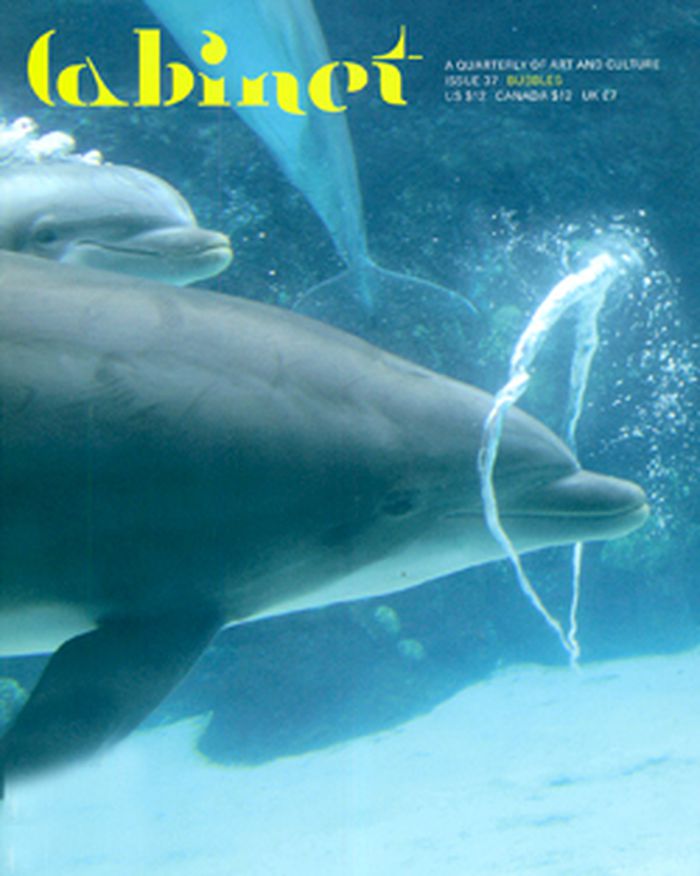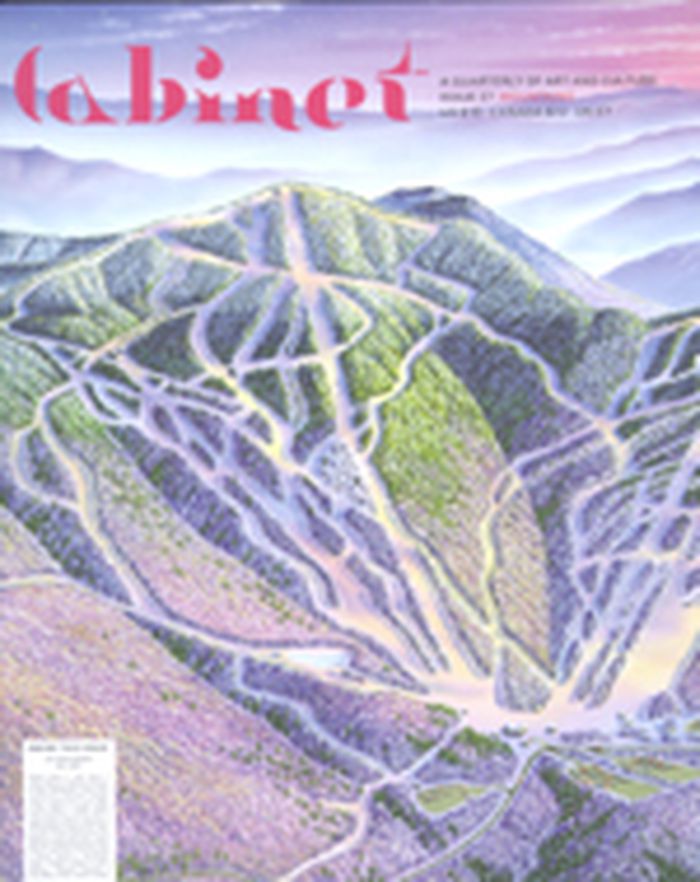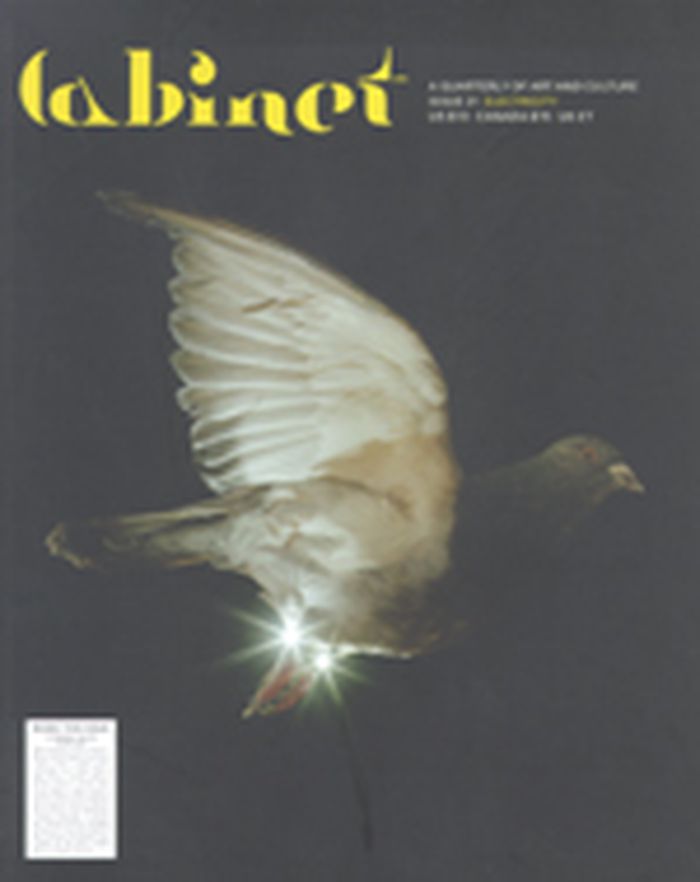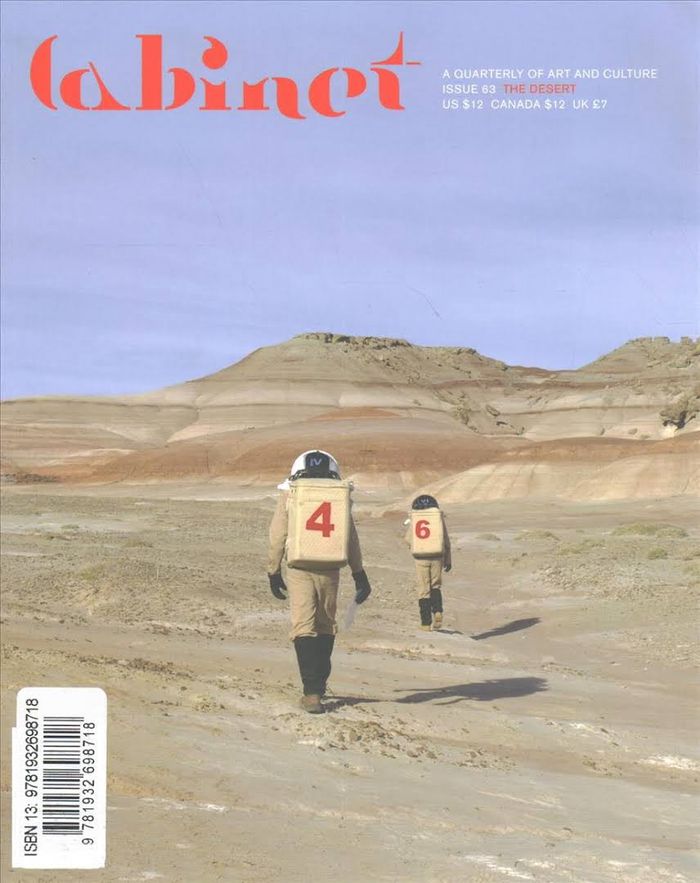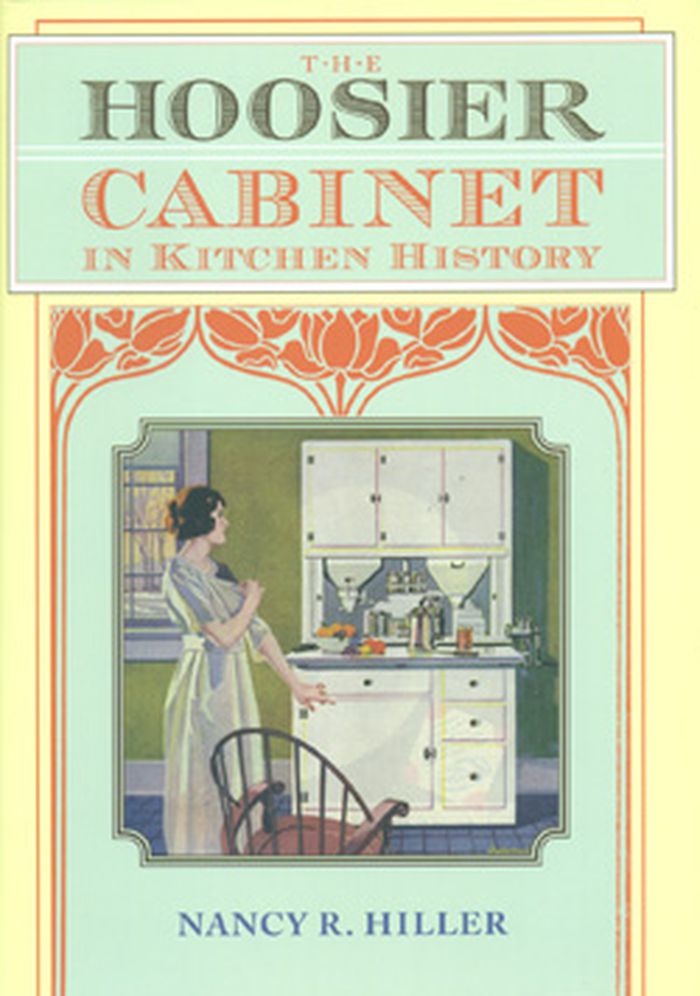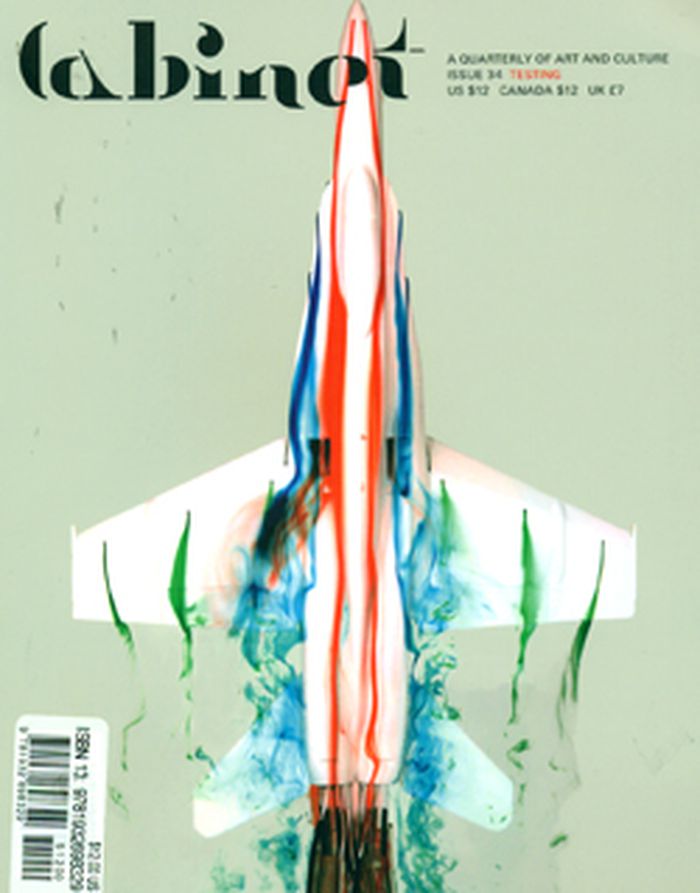Cabinet 37: Bubbles
$14.00
(disponible en magasin)
Résumé:
A child's plaything and an object of study for scientists; a space of protection but also of isolation: the “bubble” has a cultural significance far more substantial than its fleeting form suggests. Bubbles percolate through the hydrology studies of Leonardo da Vinci, the optical experiments of Newton and the architectural theories of Buckminster Fuller. Cabinet issue 37,(...)
Cabinet 37: Bubbles
Actions:
Prix:
$14.00
(disponible en magasin)
Résumé:
A child's plaything and an object of study for scientists; a space of protection but also of isolation: the “bubble” has a cultural significance far more substantial than its fleeting form suggests. Bubbles percolate through the hydrology studies of Leonardo da Vinci, the optical experiments of Newton and the architectural theories of Buckminster Fuller. Cabinet issue 37, with its special section on “Bubbles,” features an interview with Richard Julin, the world's foremost authority on champagne; Susan Schuppli on Michael Jackson's orphaned chimpanzee Bubbles; Eben Klemm on the culinary applications of fizz; and Simon Schaffer on rationality and the physics of bubbles. Elsewhere in the issue: Paul Maliszewski on the color green; an interview with “nasalnaut” George Aldrich, the NASA employee whose nose has to approve every item sent into space; Adam Jasper on the cat paintings of schizophrenic artist Louis Wain; Jocko Weyland on the history of U.S. highway dividers; and an interview with Catalin Avramescu on the intellectual history of cannibalism.
Revues
livres
Description:
xxv, 560 pages, 39 pages of plates : illustrations, plans ; 25 cm.
Rome : Institutum Historicum S.I., 1960.
Le recueil de plans d'édifices de la Compagnie de Jésus conservé à la Bibliothèque nationale de Paris : suivi de l'inventaire du recueil de Quimper / par Jean Vallery-Radot et de l'inventaire des plans des archives romaines de la Compagnie, par Edmond Lamalle.
Actions:
Exemplaires:
Description:
xxv, 560 pages, 39 pages of plates : illustrations, plans ; 25 cm.
livres
Rome : Institutum Historicum S.I., 1960.
Cabinet 27 : mountains
$12.00
(disponible sur commande)
Résumé:
Looming large in both geological fact and sociocultural significance, mountains promise grandeur, picturesque natural beauty, good health and the chance to literally rise above the everyday - yet they also menace our imaginations with their harsh conditions, dangerous terrain and deep sense of isolation. These multivalent moods have proved an enticement to sportsmen,(...)
Cabinet 27 : mountains
Actions:
Prix:
$12.00
(disponible sur commande)
Résumé:
Looming large in both geological fact and sociocultural significance, mountains promise grandeur, picturesque natural beauty, good health and the chance to literally rise above the everyday - yet they also menace our imaginations with their harsh conditions, dangerous terrain and deep sense of isolation. These multivalent moods have proved an enticement to sportsmen, scientists, poets and philosophers. Indeed, our modern notion of the "sublime" was born in the Alps - where, as the English critic John Dennis wrote in 1693, nature was revealed as not solely a "delight that is consistent with reason," but also an experience "mingled with Horrours, and sometimes almost with despair." Cabinet 27 features Brian Dillon on the Cold War fact and Faustian fiction of Germany's Brocken; Allen S. Weiss on Petrarch and the winds of Mount Ventoux; and Jeffrey Kastner on the eighteenth-century Alpine panoramas of Hans Conrad Escher von der Linth. It also features Christopher Turner on the "lunar photographs" of James Nasmyth; Viktoria Tkaczyk on scientist Robert Hooke; biologist J.S.B. Haldane on being the right size; artist projects by Casey Logan and Walead Beshty; and Peter Lamborn Wilson's examination of the alchemical properties of building materials.
Revues
Cabinet 21 : electricity
$12.00
(disponible sur commande)
Résumé:
Electricity manifests itself in every facet of our lives--from the tiny shock received by touching a doorknob to the explosive power of a lightning strike, from the modest Hoover dustbuster to the industrial grandeur of the Hoover Dam. As a force that has given human beings seemingly unlimited power over nature and refashioned our understanding of day and night, and as a(...)
Cabinet 21 : electricity
Actions:
Prix:
$12.00
(disponible sur commande)
Résumé:
Electricity manifests itself in every facet of our lives--from the tiny shock received by touching a doorknob to the explosive power of a lightning strike, from the modest Hoover dustbuster to the industrial grandeur of the Hoover Dam. As a force that has given human beings seemingly unlimited power over nature and refashioned our understanding of day and night, and as a metaphor for the social currents flowing among individuals and communities, electricity has been our invisible yet ubiquitous ally in the creation of a contemporary "technological sublime." Cabinet No. 21 includes an interview with Sharon Beder on electricity and modernity in America; Margaret Wertheim on Lichtenberg figures, frozen lightning captured in acrylic blocks; Michael Sanchez on Francisco Salva's shocking proposal for an eighteenth-century human telegraphy system; an interview with Marcello Pera on how a frog triggered a decisive scientific debate between Enlightenment "electricians" Galvani and Volta; an essay on Benjamin Franklin's promotion of Ebenezer Kinnersley's electrified "magical picture"; and a firsthand account by a survivor of multiple lightning strikes. Also Tom Vanderbilt on Stasi scent samples; an interview with Sam Chwat, the foremost accent elimination coach in the United States; and artist projects by Andrea Geyer and Rachel Watson.
Revues
Cabinet 63: the desert
$15.00
(disponible sur commande)
Résumé:
Cabinet issue 63, with a special section on “The Desert,” includes Maria Golia on the long history of tomb raiding in Egypt; Margaret Spelling on her recent visit to the town built in the Andalusian desert as a set for Italian spaghetti westerns; and Jonathan Randall on climate change and the shifting boundaries of the world’s deserts. Elsewhere in the issue: George(...)
Cabinet 63: the desert
Actions:
Prix:
$15.00
(disponible sur commande)
Résumé:
Cabinet issue 63, with a special section on “The Desert,” includes Maria Golia on the long history of tomb raiding in Egypt; Margaret Spelling on her recent visit to the town built in the Andalusian desert as a set for Italian spaghetti westerns; and Jonathan Randall on climate change and the shifting boundaries of the world’s deserts. Elsewhere in the issue: George Pendle on the unusual friendship between RAND Corporation strategist Herman Kahn and performance artist James Lee Byars; Adam Jasper on the surprising history of the “lorem ipsum” placeholder text used universally by designers and publishers; and Volker Welter on visiting sites significant to F.W. Murnau’s ill-fated life in Hollywood.
Revues
livres
Description:
240 pages, 14 unnumbered leaves of plates : illustrations (some color), map ; 26 cm
Berkeley : University of California Press, ©1978.
The illustrated Pepys : extracts from the diary / [Samuel Pepys] ; selected & edited by Robert Latham ; [picture researcher, Barbara Fraser].
Actions:
Exemplaires:
Description:
240 pages, 14 unnumbered leaves of plates : illustrations (some color), map ; 26 cm
livres
Berkeley : University of California Press, ©1978.
$49.50
(disponible sur commande)
Résumé:
Loaded with labor and time-saving conveniences, the Hoosier cabinet was among the earliest design innovations of the modern American kitchen. This culinary workstation allowed owners to maintain an efficient and clutter-free kitchen by centralizing utensils, cookware, tools, and ingredients all the while providing a space in which to prepare the meals of the day.(...)
The Hoosier cabinet in kitchen history
Actions:
Prix:
$49.50
(disponible sur commande)
Résumé:
Loaded with labor and time-saving conveniences, the Hoosier cabinet was among the earliest design innovations of the modern American kitchen. This culinary workstation allowed owners to maintain an efficient and clutter-free kitchen by centralizing utensils, cookware, tools, and ingredients all the while providing a space in which to prepare the meals of the day. Bloomington-based cabinetmaker Nancy R. Hiller draws on her years of specialty cabinet making and thorough knowledge of interior design to deliver an entertaining, beautiful, and informative history of the Hoosier cabinet—revealing its influence on the development of the contemporary American home. Illustrated with original manufacturers' advertisements and sales literature—some of which is previously unpublished—as well as color and black-and-white photos, this long-overdue book on an icon of the early 20th-century kitchen will be an invaluable resource to cabinetmakers, antiques enthusiasts, and homeowners planning a period-inspired kitchen.
Design d’intérieur
livres
Description:
6 pages ; 28 cm.
Monticello, Ill. : Vance Bibliographies, [1986]
Design of doctors' and dentists' offices : a bibliography of periodical literature / Mary Ellen Huls.
Actions:
Exemplaires:
Description:
6 pages ; 28 cm.
livres
Monticello, Ill. : Vance Bibliographies, [1986]
livres
Description:
205 pages, 1 unnumbered leaf of plates : illustrations ; 28 cm
New York : Dover Publications, 1979.
Craftsman homes : architecture and furnishings of the American arts and crafts movement / by Gustav Stickley.
Actions:
Exemplaires:
Description:
205 pages, 1 unnumbered leaf of plates : illustrations ; 28 cm
livres
New York : Dover Publications, 1979.
$14.00
(disponible en magasin)
Résumé:
Cabinet 34 puts our culture of constant examination, and self-examination itself, to the test, scrutinizing the historical conventions that have produced our contemporary obsession with quantifying and judging everything from aptitude and health to personality and durability. The thematic section of this issue includes Mark Dery on the history of the IQ test; Mats Bigert(...)
Revues
septembre 2009
Cabinet 34: testing, summer 2009
Actions:
Prix:
$14.00
(disponible en magasin)
Résumé:
Cabinet 34 puts our culture of constant examination, and self-examination itself, to the test, scrutinizing the historical conventions that have produced our contemporary obsession with quantifying and judging everything from aptitude and health to personality and durability. The thematic section of this issue includes Mark Dery on the history of the IQ test; Mats Bigert on the pitch drop experiment (the world's longest continuously running laboratory experiment, which began in 1927); Charlotte Delbanco on animal testing; and Christopher Turner on projective personality tests. The unthemed section boasts a brief visual history of the AK-47 as the quintessential symbol of political resistance; Allen S. Weiss on the sense and no-sense theory of proper names; Emily Thompson on early silent films; and Brian Dillon on Antonin Artaud's strange sojourn to Ireland.
Revues
